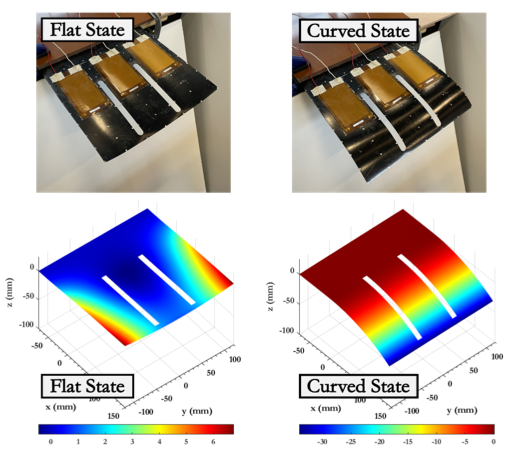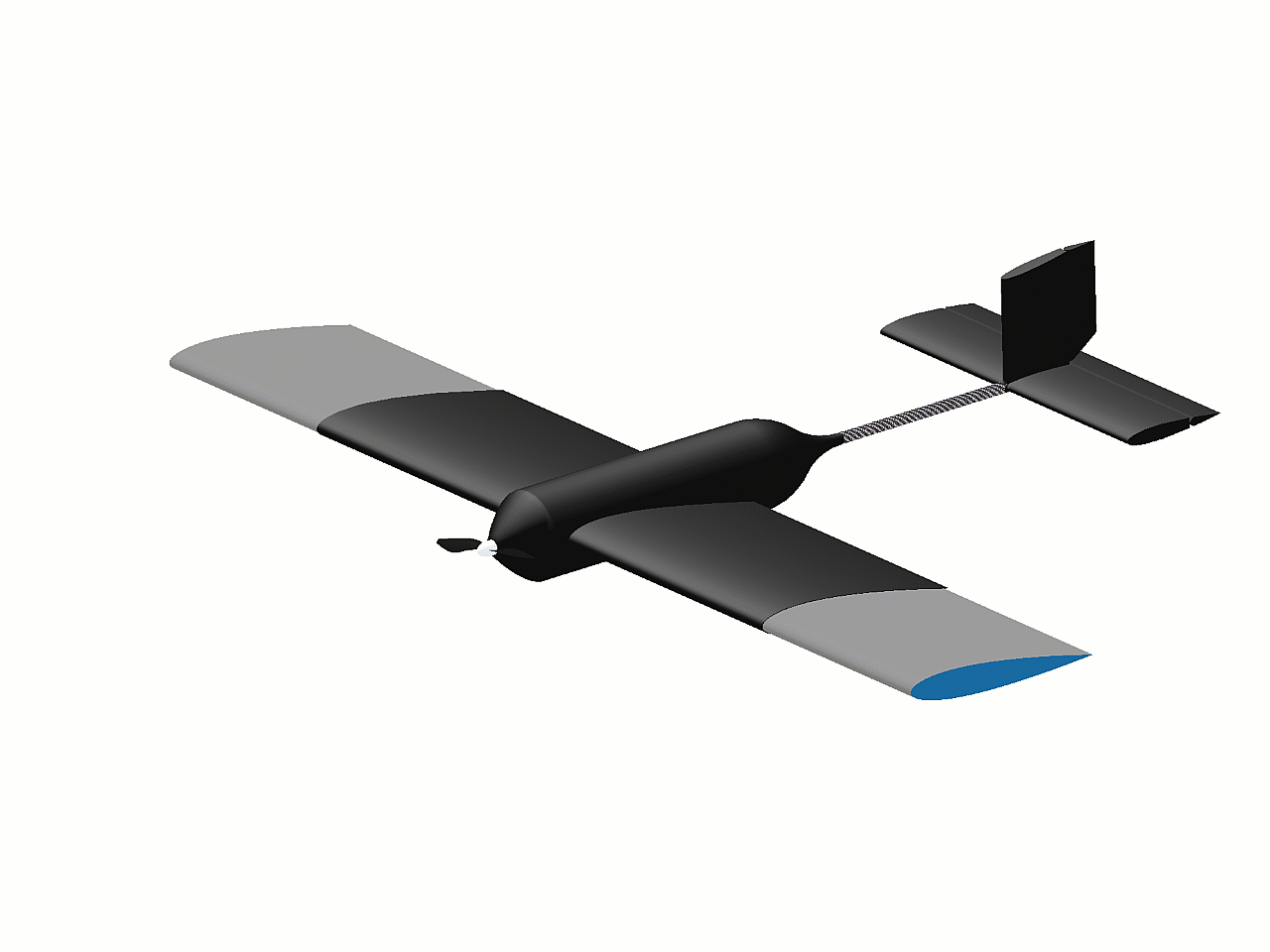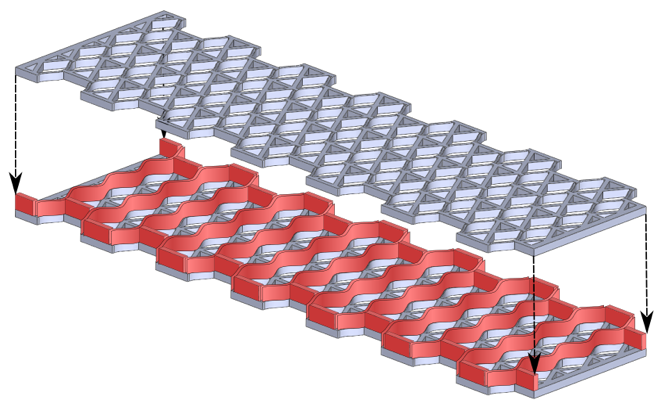Carbon fiber reinforced polymer (CFRP) laminates exhibit excellent lightweight, high strength characteristics which make them the primary choice for aircraft structural applications. The stacking sequence of these laminates dictates their post-cure shape and behavior. When the carbon fiber plies are stacked in an unsymmetric cross-ply ([0/90]) layup, the mismatch in the thermal properties in the longitudinal and transverse directions results in the development of curvature upon curing and subsequent cooling. The post-cured laminate exhibits two room-temperature shapes, thus exhibiting “bistability”. Bistable composite laminates have been widely studied for applications in morphing structures due to their ability to exhibit different shapes and distinct degrees of stiffness about each stable state. The laminate can be switched between its stable shapes using a “snap-through/snap-back” motion, achieved either using force application, or more sophisticated actuation techniques like electromechanical and thermomechanical actuators.

Bistable laminates with low aspect ratios (Length/Width) suffer from decreased bending stiffness and easily lose bistability when subjected to clamped boundary conditions. In this project, we address this challenge by introducing parallel slits along the width of the laminate, thereby relieving the deformation and enabling natural curving of the laminates when clamped. We demonstrate the utility of slits in preserving the bistability of low aspect ratio laminates both numerically and experimentally. We also develop semi-analytical models using the Rayleigh-Ritz energy minimization method to predict the stable shapes of bistable laminates for a wide range of geometries and stacking sequences. We further analyze the stiffness characteristics of laminates for use in practical applications, and design piezoelectric actuation techniques using piezoelectric macrofiber composite (MFC) actuators while optimizing for the voltage limitations and load-bearing requirements.
Morphing wing design is constrained by the mutually exclusive goals of high load-carrying capacity, low weight, and sufficient aerodynamic control authority via conformal shape adaptation. This trade-off can be addressed by exploiting the stiffness selectivity and shape "lock-in" properties enabled by using bistable beam-like elements within compliant structures. An aero-structural optimization method is developed to realize morphing structures with selective stiffness and shape "lock-in" capability from embedded bistable elements. We leverage an embeddable beam element with an invertible curved arch that provides stiffness selectivity and camber variation to a symmetric rib geometry. Optimization objectives and constraints are designed to maximize the structure's stiffness change and camber morphing "lock-in" effect when operating at two distinct flight conditions. Using the optimization results, we have manufactured a wing section demonstrator with selective stiffness and "lock-in" morphing featuring two optimized ribs, a load-carrying skin made of a carbon reinforced laminate, Macro-Fiber Composite (MFC) actuators, and a servo-controlled mechanism for switching the bistable elements' states. The power and energy requirements of actuating and holding a target deflection are experimentally measured and compared. The results show that the bistable elements can assist in holding a target deflection at a reduced energy cost. This experimental demonstrator is tested in a low-speed wind tunnel demonstrating the load carrying capability and lift variation achieved from switching states.


Morphing wings have the potential to provide aircraft with unique functionality and increased flight performance. This is particularly true for aircraft with a need to operate in multiple distinct flight regimes, such as a slow, efficient loiter and a fast dash. Traditional approaches to these problems have been the use of mechanical subsystems with specific functionality, for example high-lift devices and control surfaces. These mechanisms provide only a single function with several disadvantages, such as increasing weight, maintaining complex moving assemblies, and creating discontinuities in the aerodynamic surface which increase drag and aircraft noise. A potential method for addressing these objectives includes using multifunctional compliant structures which exploit elastic instabilities to create large, reversible shape changes while retaining a relatively high degree of stiffness. A planform wing morphing concept has been proposed that utilizes a multistable, cellular metamaterial applied to a beam-like structure. This multistable honeycomb is composed of rows of locally bistable, arched members. When the arch is everted, a second configuration is achieved which produces a shorter material length in one dimension. This shorter length is stable, and therefore maintained with no additional energy input from actuation systems. A metabeam can be constructed from two offset plates of this cellular metamaterial with a network of coupling supports. This arrangement provides a lightweight, load-carrying structure capable of large, reversible deformations in the spanwise direction. This project has explored the properties of the multistable honeycombs, from the unit cell level through an analysis of several cell arrangements, to the sectional properties of the metabeam. A hybrid spanwise morphing wing concept incorporating the metabeam has also been investigated. With assistance from collaborators at the Army Research Laboratory, a static aeroelastic analysis has been performed on the concept wing. This analysis has shown that the morphing section of the wing is capable of withstanding the loads imposed on it by aerodynamic forces in both fully extended and fully retracted states. The analysis additionally confirms the significant change in lift and drag resulting from the respective increase or decrease in span caused by switching rows of the metabeam’s cellular structure from state to state. A dynamic aeroelastic analysis is currently underway to investigate the flutter behavior of the wing.
